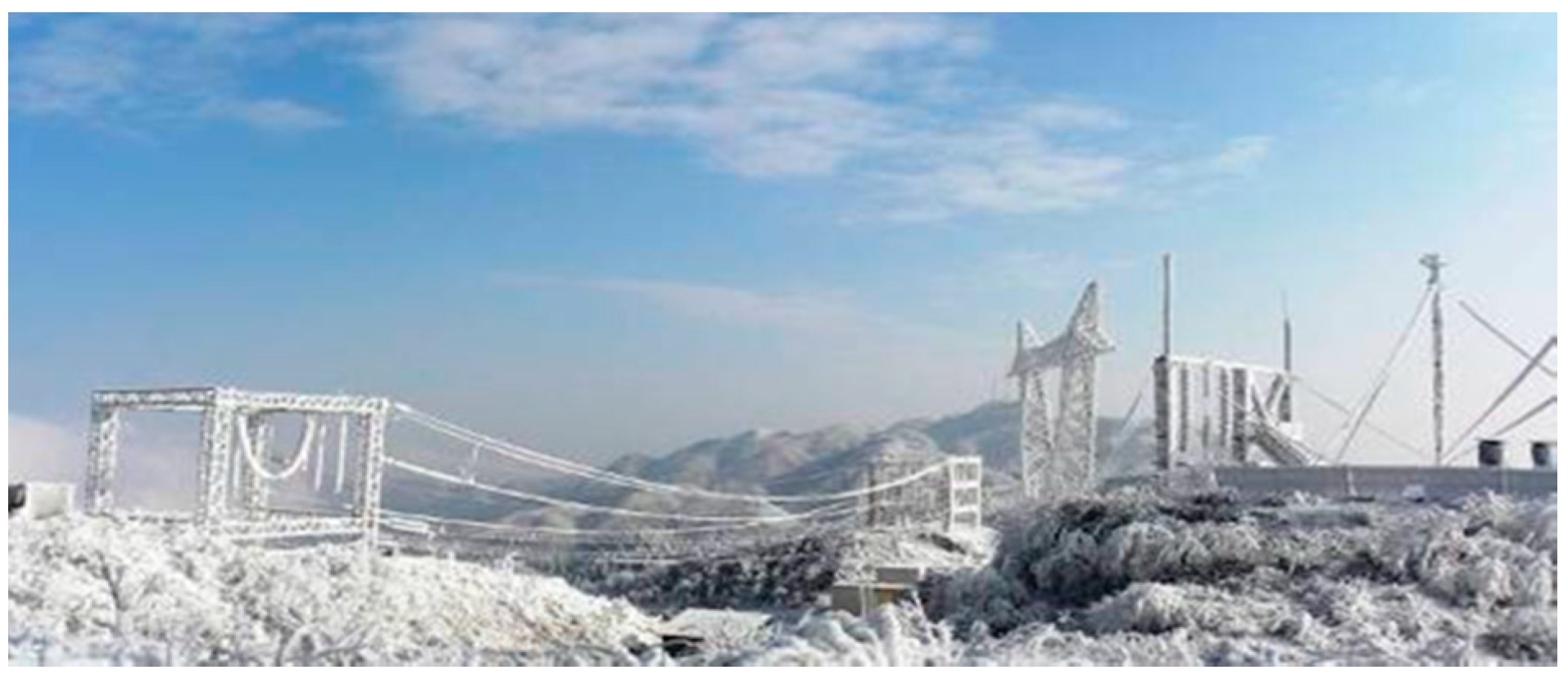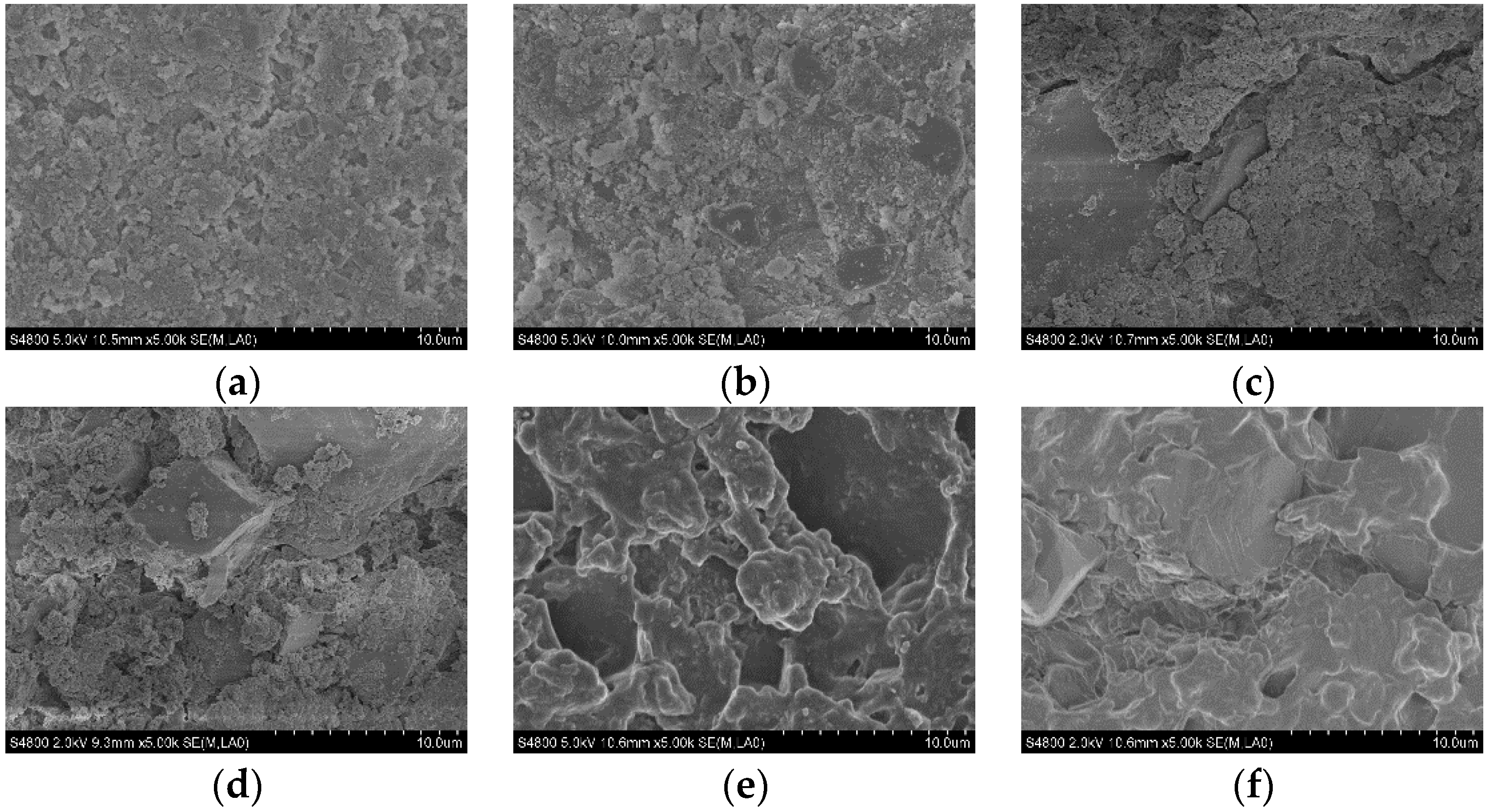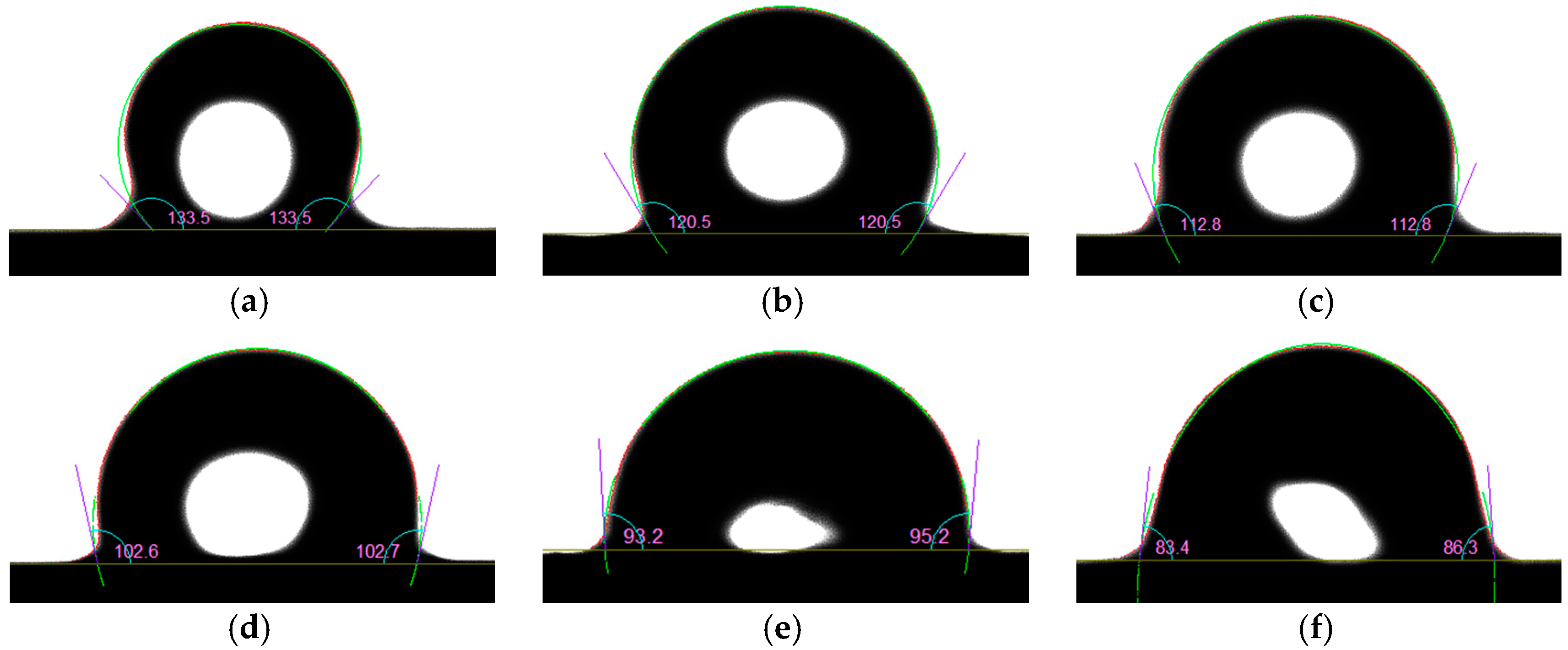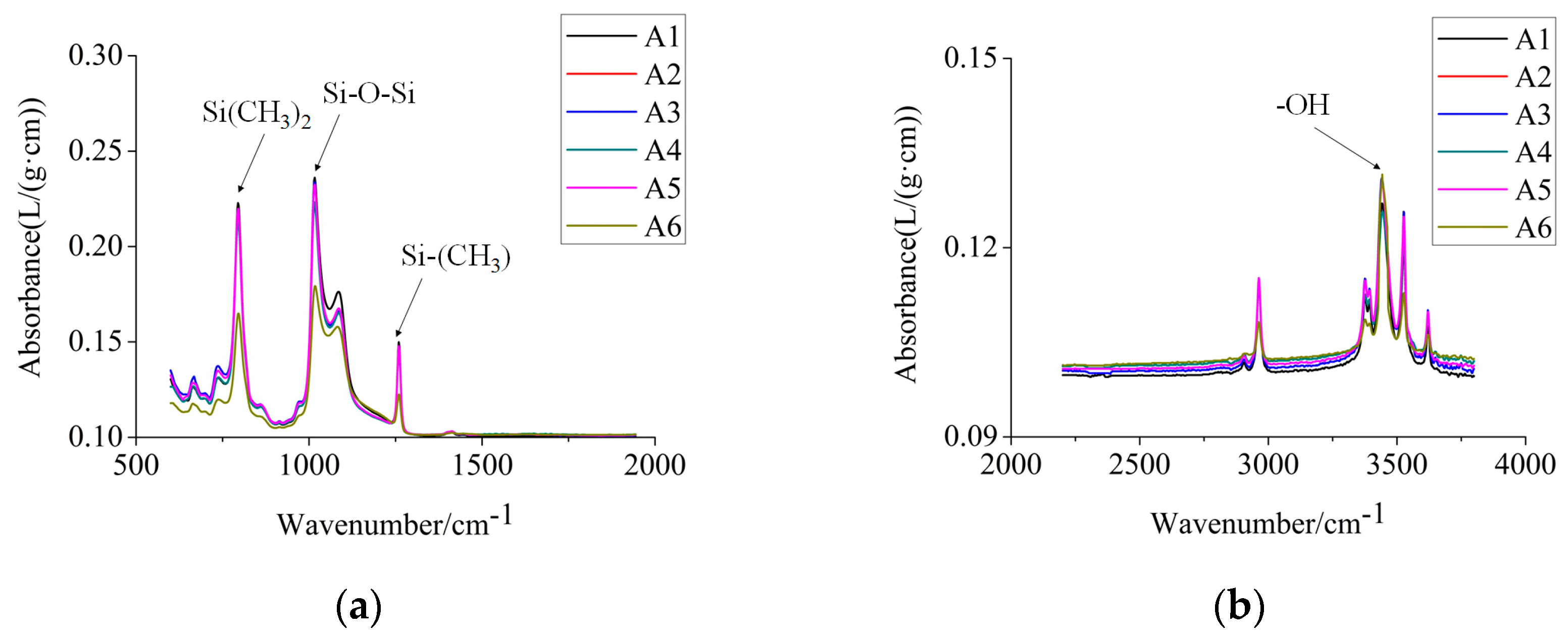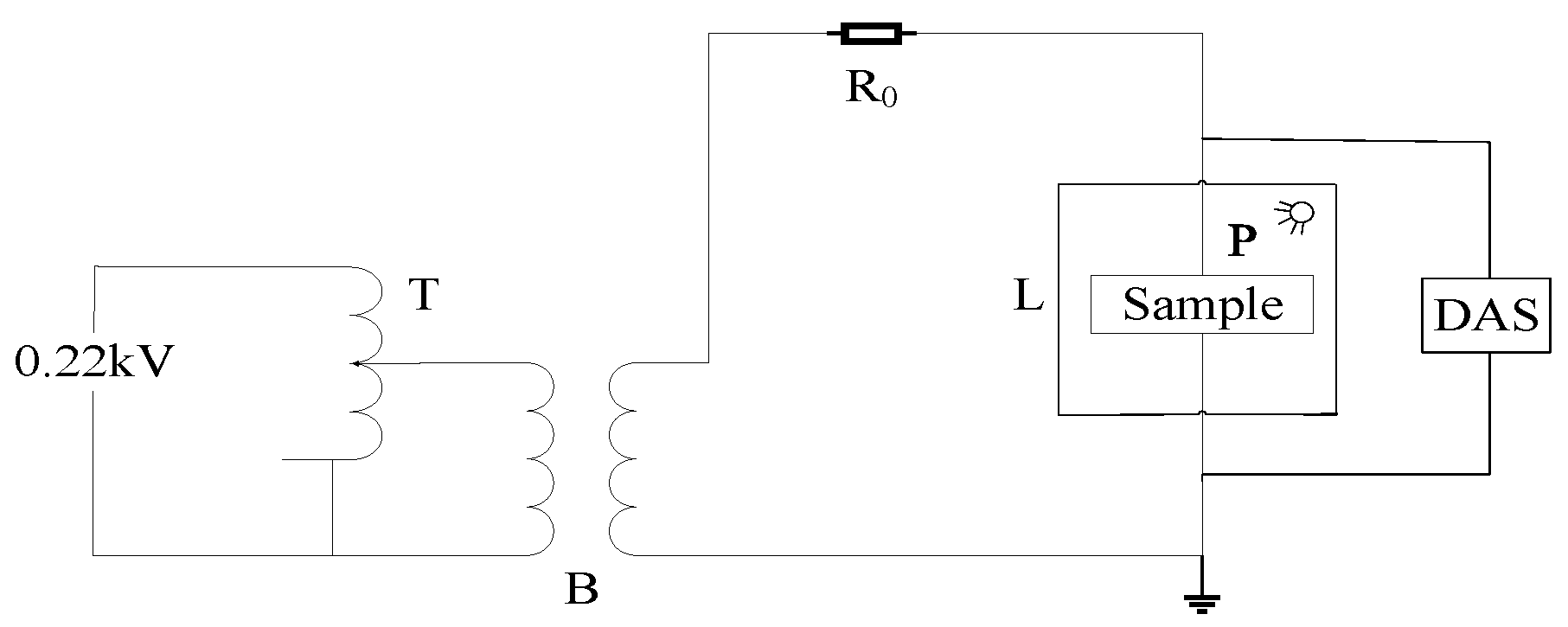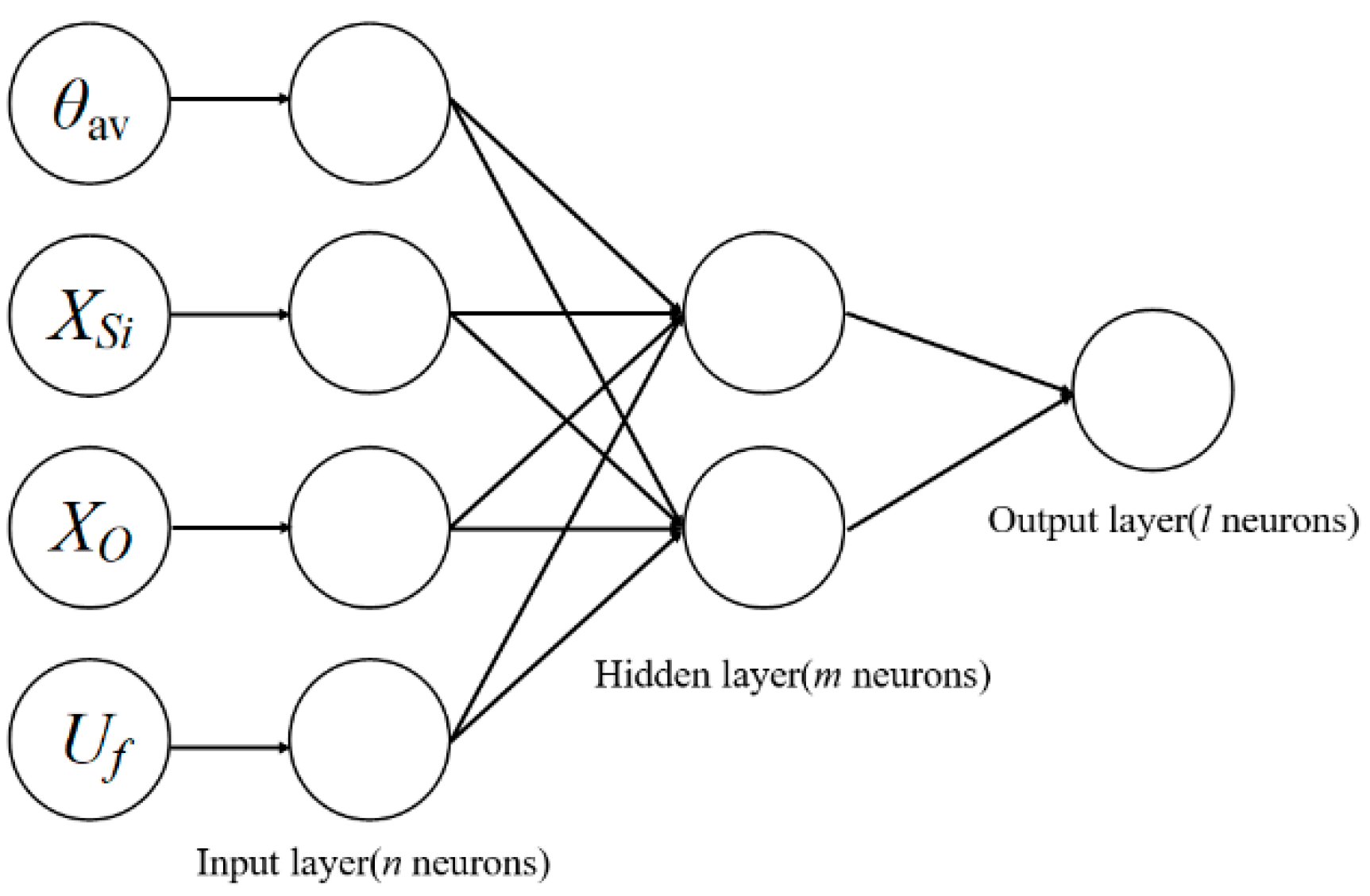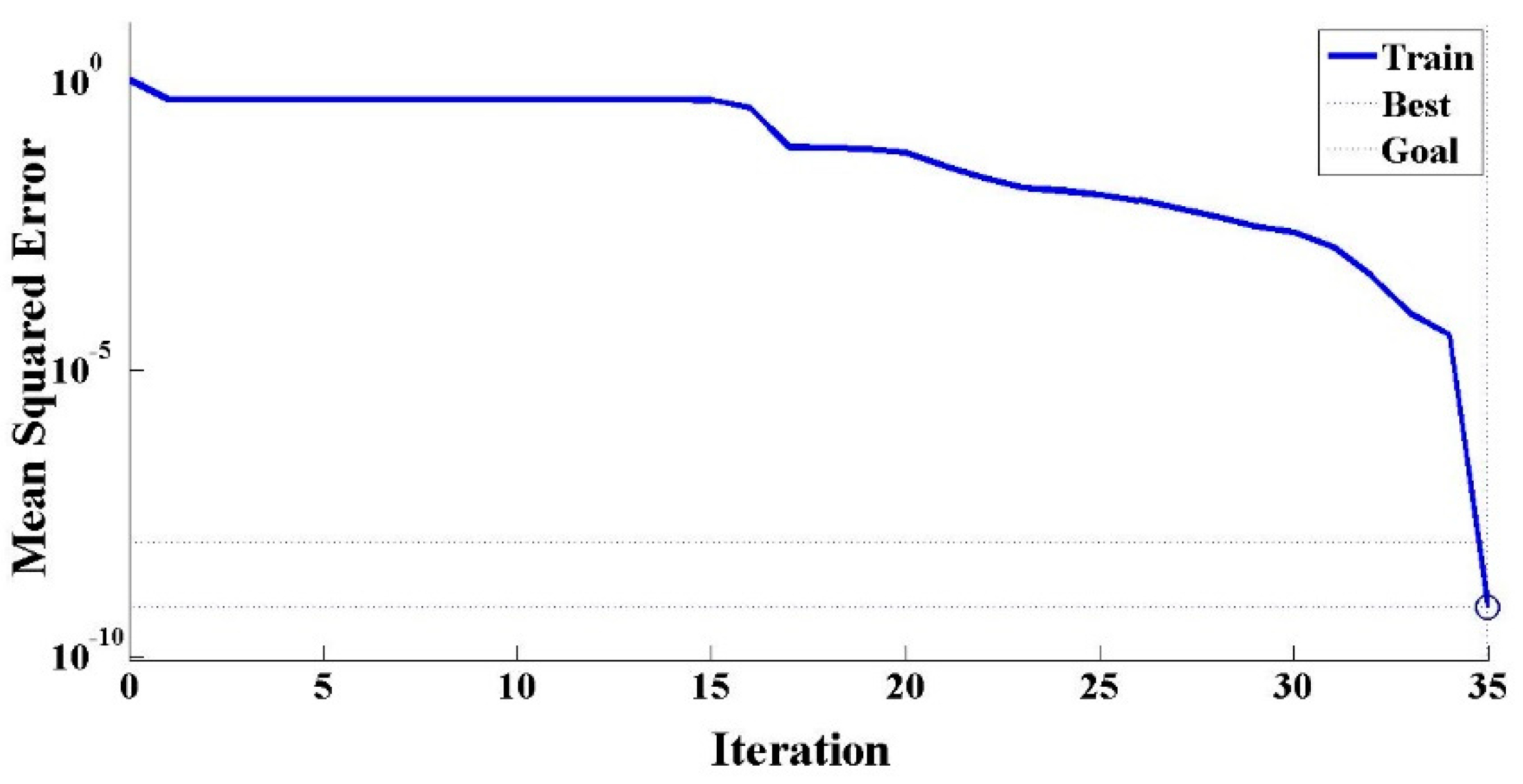This section covers the details for the process of proposing a prediction method for determining the aging time of composite insulators, including analysis of relative parameters for lifespan prediction and a prediction method for the aging time of composite insulators.
3.1. Analysis of Relative Parameters for Lifespan Prediction
In
Section 2, corresponding parameters of composite insulators under different aging years for predicting lifespan were studied, as listed in
Table 8.
In this paper, Pearson correlation analysis, a statistical method, was employed and the correlation coefficient
r was utilized to preliminarily analyze the correlation between each lifespan prediction parameter and the operating year [
25]:
where,
xi is the lifespan prediction parameters of the
ith sample;
ti is the aging year of the
ith sample;
is the mean value of lifespan prediction parameters of samples aged for different years;
is the mean value of aging time of samples aged for different years.
The t-test was used to detect the significance of correlation coefficients between lifespan prediction parameters and aging time. The calculation is expressed in Equation (5).
In Equation (5), if the significance value
α is less than 0.05, it indicates that there is a certain correlation between two variables; if
α is less than 0.01, it indicates that there is a significant correlation between two variables. Test results are listed in
Table 9.
(1) According to the results of correlation analysis (
Table 9), with the increase of aging time, the static contact angle
θav, the relative content of Si element
XSi and salt-fog flashover voltage
Uf decrease significantly, and the relative content of O element
XO increases significantly. These four parameters are significantly correlated with aging time (
α < 0.01). These parameters can be used in evaluating the aging degree of aged composite insulators and proposing a prediction method to determine the aging time of composite insulators.
(2) With the increase of aging time, the hardness A and the aging level Sem increase, and the ratio of Si–(CH3)2 absorption peak altitude to Si–O–Si absorption peak altitude (H) and the relative content of C element XC decrease. These four parameters were correlated with aging time (α < 0.05). On this basis, these parameters can be used as auxiliary indexes in evaluating the aging effects of composite insulators.
3.2. Prediction Method for Aging Time of Composite Insulators
A BP neural network is a kind of multi-layer feed-forward neural network. Because of its simple structure, many adjustable parameters, training algorithms and good maneuverability, BP neural networks have been extensively applied [
26]. In this case, a BP neural network was employed to propose a prediction method for determining the aging time of composite insulators by means of the four parameters which are significantly correlated with aging time. The structure of the BP neural network used in this paper is shown in
Figure 7.
In
Figure 7, there are
n neurons in the input layer of the BP neural network,
m neurons in the hidden layer and
l neurons in the output layer. Based on Reference [
27], the optimal number of neurons in the hidden layer are given by Equations (6)–(8).
where
n is the number of neurons in the input layer;
l is the number of neurons in the output layer;
m is the number of neurons in the hidden layer;
a is a constant between 0 and 10.
This paper employs four parameters, namely, the static contact angle θav, the relative content of Si element XSi, the relative content of O element XO and the salt-fog flashover voltage Uf, which are significantly correlated with aging time, as the input neurons, and the aging time as the output neuron. Thus, the number of neurons in the hidden layer is 2. Moreover, the goal of the error is set as 10−8.
In BP neural network testing, parameters of composite insulators aged for 1–10 years were employed as training samples, and parameters of composite insulators aged for 12 years were employed as test samples. The error changes during training are shown in
Figure 8.
In the process of BP neural network training for aging time prediction, the mean squared error of the predicted aging time of composite insulators scarcely changed at first. During the process from 30 to 35 iterations, the mean squared error of predicted aging time decreased rapidly and achieved convergence in 35 iterations. In this case, the mean squared error of predicted aging time is 10−8, which indicates that the equivalent relationship between significantly correlated parameters and aging time can be established accurately based on the BP neural network, and that the aging time of composite insulators can be predicted accurately based on the method proposed in this paper.
In this paper,
σ1 is defined as the relative error between the predicted aging time (denoted
a1) and actual aging time (denoted
a). Results for
a1,
a and
σ1 of samples aged for 12 years are shown in
Table 10.
Table 10 shows that the relative error
σ1 between the predicted and actual values is less than 5%, which is within the range of high accuracy in engineering practice. In this case, the method based on a BP neural network can be used in predicting the aging time of composite insulators from Factory A in future research.
